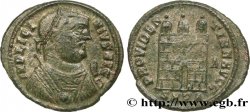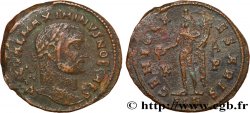Live auction - fme_936028 - SECOND EMPIRE Insigne de député
Чтобы принять участие в торгах, вы должны войти в систему и стать подтвержденным участником аукциона. Войдите, чтобы сделать ставку. Ваш аккаунт будет подтвержден в течение 48 часов. Не ждите до закрытия торгов, чтобы зарегистрироваться.Сделав ставку на данный товар, вы вступаете в юридическое соглашение на покупку выбранного товара и нажатием кнопки «Сделать ставку» подтверждаете принятие вами условий интернет-аукционов cgb.fr.
Ставка может бить сделана только в полном эквиваленте евро. Торги закроются согласно времени, указанному в описании товара, все ставки, сделанные после закрытия торгов, учитываться не будут. Не следует откладывать предложение вашей ставки до последнего момента, так как система может не успеть обработать вашу заявку, и ваша ставка не будет принята. Более детальную информацию вы найдёте здесь: FAQ по интернет-аукционам.
Все ставки победителей подлежат комиссии 18%.
Все ставки победителей подлежат комиссии 18%.
| Оценить : | 200 € |
| Цена : | 524 € |
| Максимальная предлагаемая цена : | 524 € |
| Конец торгов : | 10 December 2024 17:33:03 |
| Участников : | 5 Участников |
Тип Insigne de député
Дата: n.d.
Металл: various
Диаметр: 118 mm
Ориентация осей монеты: 12 h.
Вес: 6,73 g.
Век: lisse
Пуансон: sans poinçon
Комментарии о состоянии
Tissu un peu usé
Лицевая сторона
Аверс: легенда: ANÉPIGRAPHE.
Аверс: описание: Ruban tricolore bleu, blanc et rouge avec rosette tricolore et passementerie brodé d’or : un aigle avec les ailes déployés posé sur un faisceau brodé d’or.
Обратная сторона
Реверс: легенда: ANÉPIGRAPHE.
Реверс: Описание: Tissu rouge avec un bas de passementerie d’or. Bouton recouvert de soie noire.
Комментарий
Dimensions du ruban (sans les franges) : 95*37 mm
Dès 1792, les députés de l’Assemblée législative décident la création d’un insigne – un ruban tricolore – pour se distinguer des autres citoyens. Son usage n’est repris que sous l’Assemblée constituante (1848-1849) et l’Assemblée législative (1849-1851), sous la forme d’un ruban porté à la boutonnière. Quant aux insignes actuels – des broches métalliques représentant les faisceaux de la République, surmontés d’une cocarde tricolore –ils sont apparus sous la IIIe République. .
Dès 1792, les députés de l’Assemblée législative décident la création d’un insigne – un ruban tricolore – pour se distinguer des autres citoyens. Son usage n’est repris que sous l’Assemblée constituante (1848-1849) et l’Assemblée législative (1849-1851), sous la forme d’un ruban porté à la boutonnière. Quant aux insignes actuels – des broches métalliques représentant les faisceaux de la République, surmontés d’une cocarde tricolore –ils sont apparus sous la IIIe République. .








 Cообщить об ошибке
Cообщить об ошибке Распечатать страницу
Распечатать страницу Отправить мой выбор
Отправить мой выбор Задать вопрос
Задать вопрос Consign / sell
Consign / sell
 Информация
Информация















